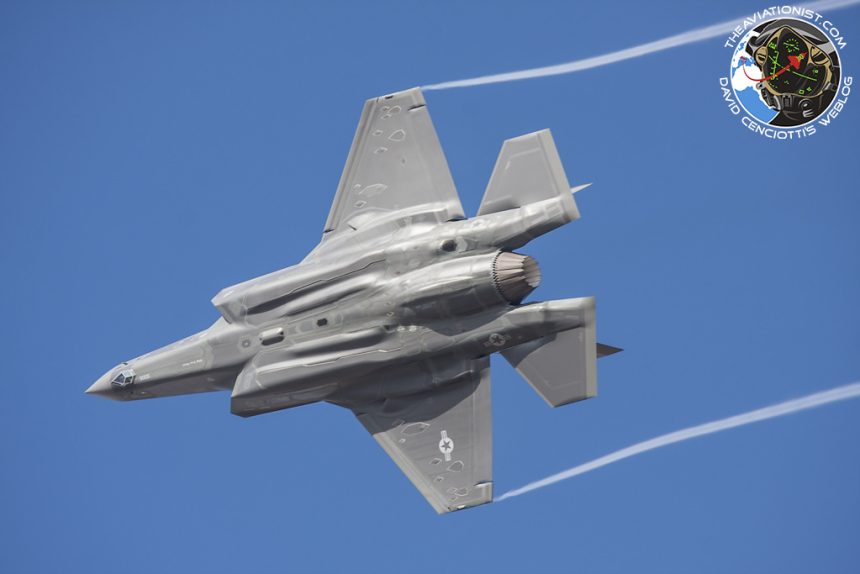Two F-35 Lightning II took on a primary role as Close Air Support providers during GF 15-08.
For the first time, F-35s belonging to the 31st Test and Evaluation Squadron played a major role during one of the 10 yearly iterations of Green Flag, an exercise conducted on the National Training Center at Fort Irwin, California, where more than 5,000 U.S. Army soldiers against simulated enemy forces in a 14-day long pre-deployment trial by fire.
Although the JSF has sporadically taken part in past Green Flag drills in the past, this was the very first time the F-35 had the primary exercise role of CAS providers: the pricey stealth multi-role planes penetrated a “contested and degraded battlespace” waiting for calls for support from JTACs (Joint Terminal Attack Controllers) and liaison officers on the ground.
According to the Air Force, the F-35s did the job effectively “just like those that came before it,” a comment that seems to suggest that F-35 is already as capable as the an A-10 or an F-16 in the CAS role, at least in the type of support with Troops in Contact required during a Green Flag exercise.
“The roles played by the two operational test fighters seem relatively modest when examined within the immense scale of a National Training Center rotation. Fourteen days of maneuvering against adversaries in vast desert mountain ranges makes Green Flag a test of the mind and body alike. But when help from the air was called upon, F-35 pilots from the 31st TES communicated and used their systems with precision. They created strategic effects that left troops on the ground largely unaware and unconcerned of what airframe they might be using — seamless integration at its finest,” says the release by the 99th Air Base Wing Public Affairs.
There is a widespread concern that the pricey, troubled multirole F-35 will not be as effective as an A-10 Thunderbolt II or any of the other aircraft the JSF is about to replace but the Air Force seems to be enthusiastic about its new combat plane, especially in the much debated CAS role.
According to AW&ST the Lightning IIs achieved an important result during GF 15-08: not a single F-35 was “shot down” during the drills, a significant achievement for the JSF at its first active participation in a major exercise, especially considering that A-10s and F-16s were defeated in the same conditions.
On the other side, several other analysts claim the participation of two test aircraft in the exercise was just a PR stunt, since the aircraft is still quite far from achieving a combat readiness required to really support the troops at war: it can’t use the gun, it is limited to a couple of JDAMs (Joint Direct Attack Munitions) and it is still flawed by a long list of serious issues, including those to the 400K USD HMD (Helmet Mounted Display).
The debate between F-35 supporters and critics was made more harsh by a brief obtained by War Is Boring, according to which the JSF was outclassed by a two-seat F-16D Block 40 (one of the aircraft the U.S. Air Force intends to replace with the Lightning II) in mock aerial combat.
Although we have already debunked some theories about the alleged capabilities of all the F-35 variants to match or considerably exceed the maneuvering performance of every fourth-generation fighter, to such an extent we already highlighted that there is no way a JSF will ever match (for instance) a Eurofighter Typhoon in aerial combat, it must be remembered that the simulated dogfight mentioned in the unclassified report obtained by WIB involved one of the very first test aircraft: the AF-02 is quite a basic JSF that lacks a mission systems software to use all the onboard sensors, does not have the special stealth coating that makes it virtually invisible to radars and it implemented an obsolete software code full of limitations.
This does not mean the F-35 will ever be as maneuverable and lethal in aerial combat as an F-22 or an F-16, but it will probably perform a bit better than AF-02 did during its simulated dogfight against the F-16D Block 40.
















